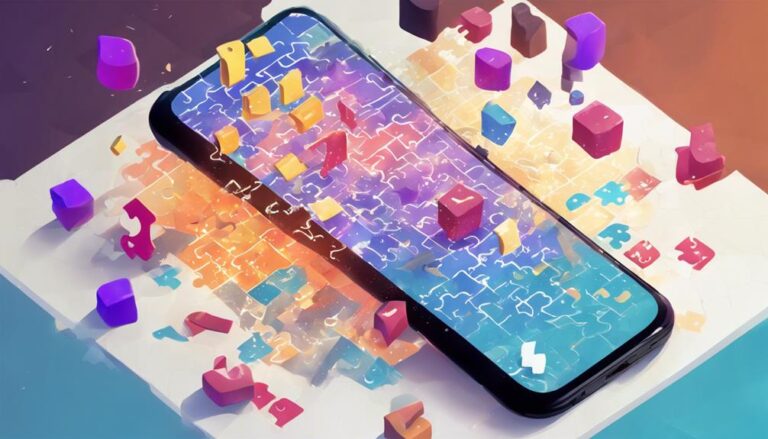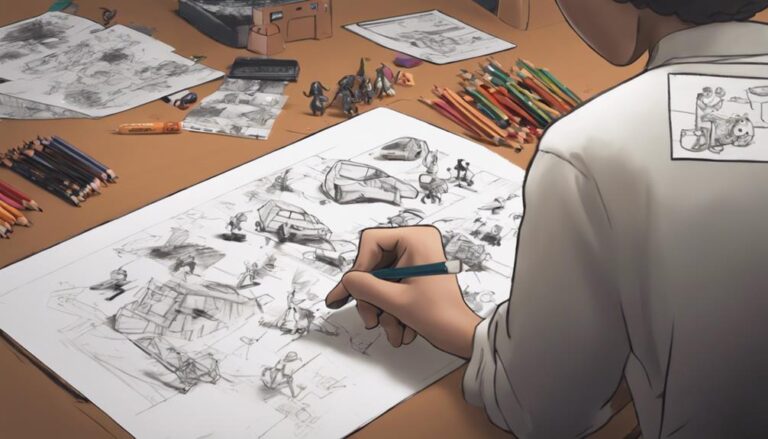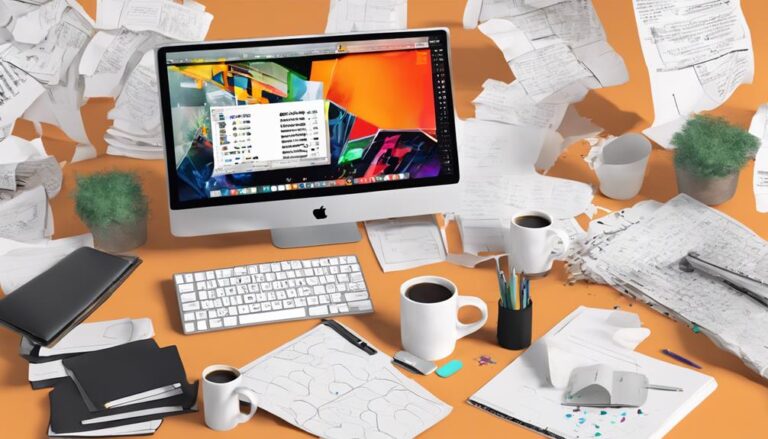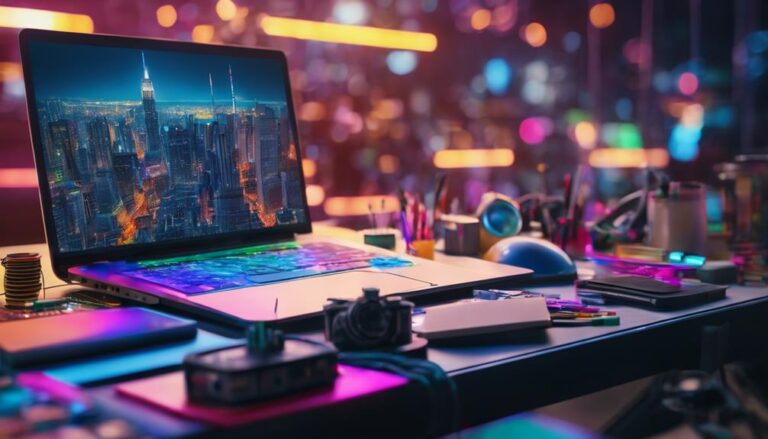From Script to Screen: Web Series Animation Process
Transforming your web series script into a visually stunning animation requires a multifaceted process. You'll start by developing your script, researching your target audience, and outlining your narrative arc in a collaborative writer's room. Next, you'll move into visual development, creating storyboards, refining character designs, and establishing a visual style and color palette. This will be followed by voice casting and recording, then animation production, where you'll set up production assets and create detailed backgrounds and characters. As you continue to bring your vision to life, you'll soon discover the intricacies of post-production and the final steps to a polished web series.
Key Takeaways
- Developing a well-formatted script is essential for organizing and tracking revisions in web series animation.
- Visual development involves refining character designs, storyboarding, and concept art to capture the tone and atmosphere of the series.
- Voice casting and recording require identifying casting strategies, holding auditions, and providing clear guidance to voice actors on tone and emotional delivery.
- Animation and visual effects involve creating detailed backgrounds, using particles and compositing to simulate natural phenomena and combine elements seamlessly.
- Post-production involves assembling the final cut, color grading, and exporting episodes in the desired format, meeting technical specifications.
Script Development and Writing
Developing a script is the foundation of any successful web series animation.
As the creator, you'll start by brainstorming ideas and crafting a compelling story. This involves researching your target audience, developing characters, and outlining the narrative arc.
Once you have a solid concept, you'll assemble a team of writers in a collaborative space known as the writer's room.
In the writer's room, you'll work together to break down the story into individual episodes, assigning tasks and deadlines to each team member.
As you write, it's essential to adhere to standard script formatting guidelines, including font styles, margins, and line spacing.
This ensures your script is easy to read and understand for all stakeholders involved in the production process.
A well-formatted script also helps you stay organized, making it simpler to track revisions and make changes as needed.
Storyboarding and Visual Planning
When you begin storyboarding and visual planning, you'll focus on developing visual concepts that capture the tone and atmosphere of your web series.
This process involves blocking action sequences to ensure smooth pacing and camera placement, which you'll refine as you iterate on your boards.
As you work through these steps, you'll also refine your character designs, making sure they align with the overall aesthetic and visual language of your series.
Developing Visual Concepts
Breaking down the script into a visual representation is the next crucial step in bringing your web series to life.
Developing visual concepts is a critical process that sets the tone and aesthetic for your show. To start, you'll conduct visual research, gathering reference images and inspiration from various sources to inform your design choices.
This research will help you define the visual style, color palette, and overall mood of your web series.
Next, you'll create a mood board, a visual representation of your research and ideas. A mood board is a collage of images, colors, and textures that evoke the desired atmosphere and tone of your show.
This tool helps you distill your ideas and communicate them to your team. By creating a mood board, you'll establish a clear visual direction for your web series, ensuring consistency in character design, backgrounds, and special effects.
Your mood board will serve as a guide throughout the production process, helping you make informed decisions about visual elements and maintaining the overall integrity of your show's aesthetic.
Blocking Action Sequences
Your visual concepts are now established, and you have a clear direction for your web series. It's time to block out the action sequences, which involves breaking down the script into visual elements.
This process, also known as storyboarding, helps you plan the pacing, shot composition, and overall flow of your scenes.
You'll start by identifying key action beats in your script, such as moments of high tension or dramatic reveals. These beats will serve as the foundation for your scene blocking.
Next, you'll sketch out rough thumbnails of each shot, considering factors like camera angle, lighting, and character placement.
As you block out your action sequences, pay close attention to shot composition. Consider the rule of thirds, leading lines, and framing to create visually appealing and dynamic shots.
You'll also want to think about the pacing of your scenes, using techniques like quick cuts or slow zooms to build tension or create dramatic effect.
Refining Character Designs
Refining character designs is an essential step in the storyboarding and visual planning process of web series animation.
You'll revisit your initial character concepts and elaborate on their visual traits, ensuring consistency throughout the series.
This stage involves delving into character nuances, such as posture, facial expressions, and body language, to create more believable and engaging personalities.
As you refine your character designs, you'll likely experience a design evolution.
Your initial ideas might change or become more detailed, and that's okay.
This process is about experimentation and iteration.
You may need to create multiple versions of a character to achieve the desired look and feel.
To refine your character designs effectively, use reference images and real-world observations to inform your decisions.
Consider the character's personality, background, and role in the story.
Think about how their design will interact with other characters and the environment.
Character and Concept Design
When developing a web series, you'll need to create engaging characters and concepts that bring your story to life.
The character design process involves defining each character's physical appearance, personality, and traits, while also considering their role in the narrative.
Character Design Process
Developing a web series requires a well-thought-out character design process, which is crucial for bringing your story to life. This process involves several stages that help you create believable and relatable characters. You'll start by gathering inspiration from various sources, such as real-life experiences, mythology, or existing fiction.
| Stage | Description |
|---|---|
| Research | Gather reference materials, such as images, videos, and written descriptions, to inform your character design. |
| Sketching | Create rough sketches of your characters to explore their proportions, poses, and facial expressions. |
| Design Evolution | Refine your character designs based on feedback and iterations, ensuring consistency and coherence. |
| Model Sheets | Create detailed model sheets to standardize your characters' appearance and proportions. |
| Color Scripting | Develop a color script to define the color palette and overall visual aesthetic of your characters. |
During the character design process, you'll also consider factors like character inspiration, personality traits, and backstory. This will help you create well-rounded characters that resonate with your audience. By following these stages, you'll be able to develop characters that are both visually appealing and emotionally engaging.
Concept Art Creation
With a solid character design in place, you're ready to dive into the world of concept art creation, where you'll bring your characters and their environments to life through detailed illustrations.
This stage involves creating concept art that showcases your artistic vision, which will serve as the foundation for your web series' visual identity.
To start, you'll create detailed concept art of your characters, including costumes, accessories, and expressions.
This will help you solidify their personalities and traits.
Next, you'll focus on environment concept art, which includes settings, props, and special effects.
This will help you establish the mood, tone, and atmosphere of your web series.
Digital painting is a popular medium for concept art creation, as it allows for flexibility and versatility.
You can experiment with different brushes, textures, and colors to achieve the desired look.
When creating concept art, consider the story, characters, and themes to ensure consistency and coherence.
Your artistic vision should shine through in every piece of concept art, providing a clear direction for your web series.
Visual Style Development
Establishing a visual style for your web series is a natural progression from creating concept art, as it refines the artistic vision and aesthetic you've begun to develop.
This involves creating a cohesive visual language that ties together characters, environments, and props. You'll start by finalizing character and concept designs, considering factors like proportions, textures, and color palettes.
As you refine your visual style, you'll create a Color Script to guide the color palette and lighting throughout the series.
This document will outline the mood and atmosphere of each scene, ensuring consistency in the overall aesthetic. Art Direction also plays a crucial role in visual style development, as it establishes the overall visual tone and guides the design process.
In developing your visual style, consider the technical limitations and capabilities of your animation software and team.
This will help you balance artistic vision with production feasibility. By refining your visual style and creating a solid foundation for your web series, you'll ensure that your final product looks polished and professional.
Your visual style will also inform future creative decisions, making the production process more efficient and effective.
Voice Casting and Recording
Once you've finalized your script and storyboard, it's time to bring your characters to life through voice casting and recording.
This process involves finding the right voice actors to portray your characters and guiding them to deliver performances that match your vision.
To start, you'll need to develop a vocal direction plan, outlining the tone, pace, and emotional depth you want your voice actors to convey.
This plan will serve as a guide for your casting process, helping you identify the right actors for each role.
When it comes to casting strategies, consider factors such as the actor's vocal range, acting experience, and ability to take direction.
You may also want to hold auditions to find the best fit for each character.
During the recording process, work closely with your voice actors to ensure they're meeting your vocal direction goals.
Provide clear guidance on tone, pace, and emotional delivery, and be prepared to make adjustments as needed.
By investing time and effort into voice casting and recording, you'll be able to bring your characters to life and create a compelling web series that engages your audience.
Effective voice casting and recording can make all the difference in the success of your animation.
Animation Production and Creation
Your animation's foundation is laid during the pre-production phase, but it's in the animation production and creation stage that your vision truly takes shape.
This stage involves bringing your story to life through the creation of 2D or 3D animations.
Key considerations during this stage include:
- Developing an animation timeline: This is a detailed schedule outlining the animation process from start to finish. It helps ensure your project stays on track and meets deadlines.
- Creating character and prop designs: These are the visual elements that bring your story to life. They must align with your script and overall vision.
- Setting up production assets: This includes preparing files, folders, and templates to streamline the animation process.
- Establishing a production budget: This outlines costs associated with animation production, including software, equipment, and personnel.
Your production budget will play a significant role in determining the scope and scale of your animation.
As you move forward with animation production, it's essential to stay within budget and ensure your vision aligns with the resources available.
Visual Effects and Compositing
To achieve the desired effects, you'll use various techniques, such as:
| Visual Effect | Description | Software Used |
|---|---|---|
| Particles | Simulating natural phenomena like fire, water, or smoke | Blender, Houdini |
| Matte Painting | Creating detailed backgrounds using digital painting | Adobe Photoshop, Krita |
| Compositing | Combining multiple elements into a single image | Adobe After Effects, Nuke |
When compositing, you'll work with multiple Composite Layers, each containing a specific element, such as characters, backgrounds, or special effects. By combining these layers, you'll create a cohesive and visually stunning final image. This stage requires attention to detail and a solid understanding of visual effects principles to ensure a seamless integration of all elements.
Sound Design and Music Composition
To craft an effective sound design, you'll need to:
- Create a sound bible: Document all the sounds used in your web series to ensure consistency across episodes.
- Design sound effects: Create custom sound effects that match the tone and style of your show.
- Record Foley: Capture high-quality Foley recordings to add texture and realism to your scenes.
- Compose music: Develop a score that complements the mood and atmosphere of your web series.
Final Editing and Rendering
As the sound design and music composition elements come together, the focus shifts to final editing and rendering, a critical stage where all the visual and audio components are meticulously fine-tuned and polished.
You'll now assemble the final cut of your web series, ensuring a seamless blend of visuals and audio. This involves locking down the edit, making any last-minute adjustments to pacing, timing, and overall flow.
Once you're satisfied with the final cut, you'll move on to color grading.
This process involves enhancing the visual aesthetic of your web series, setting the mood and atmosphere for each scene. You'll use color grading tools to adjust brightness, contrast, and saturation, creating a consistent look throughout the series.
With the final cut and color grading complete, you'll proceed to rendering.
This is the final stage of the animation process, where you'll export the finished episodes in the desired format. You'll need to consider factors such as resolution, frame rate, and file size to ensure your web series meets the required technical specifications.
Conclusion
You've now completed the web series animation process, transforming your script into a visually stunning and engaging final product. Throughout the stages, you've developed your script, created detailed storyboards, designed compelling characters, recorded voiceovers, produced animations, added visual effects, and composed soundtracks. With final editing and rendering complete, your web series is ready for release, showcasing your dedication to bringing your vision to life on screen.







